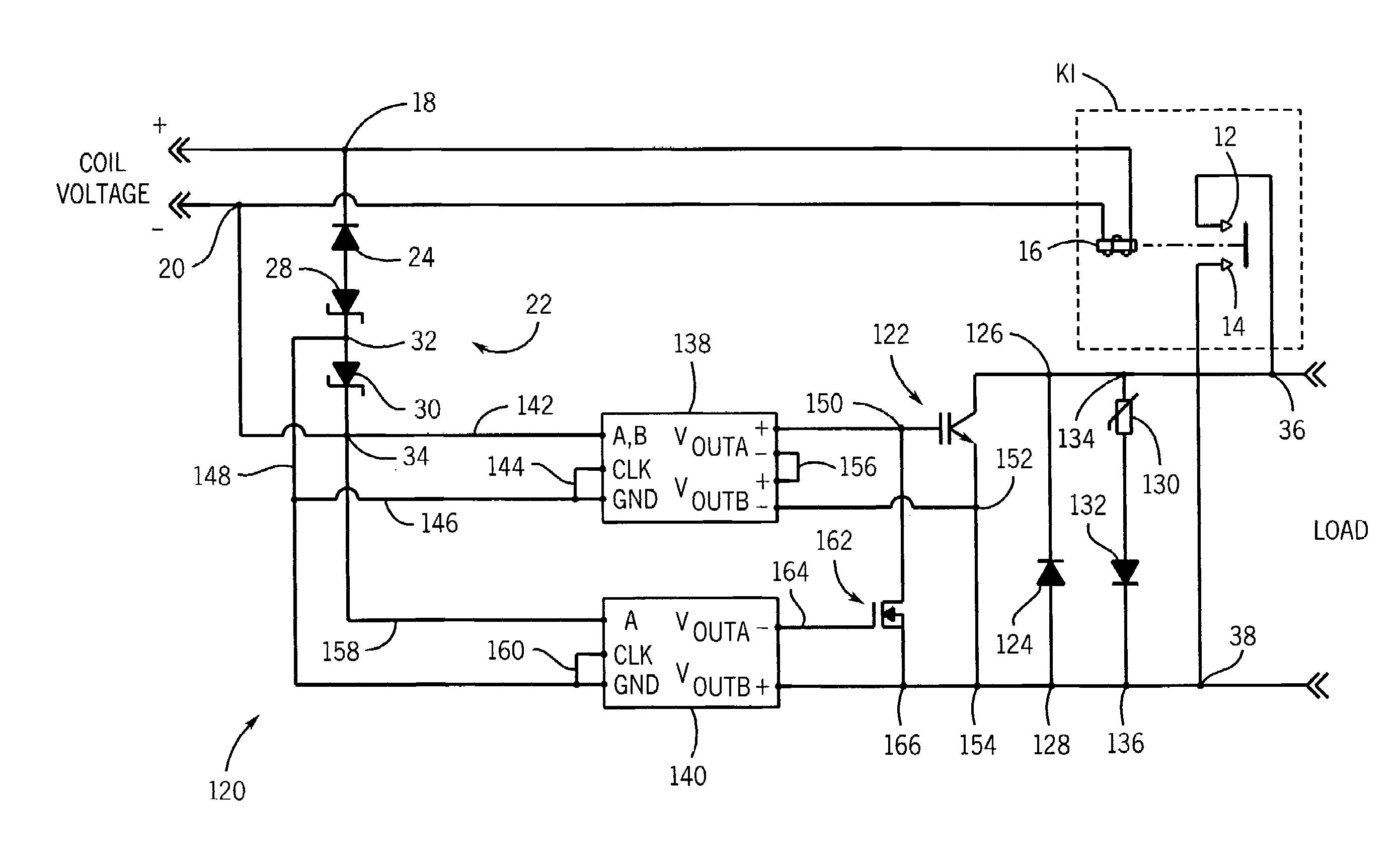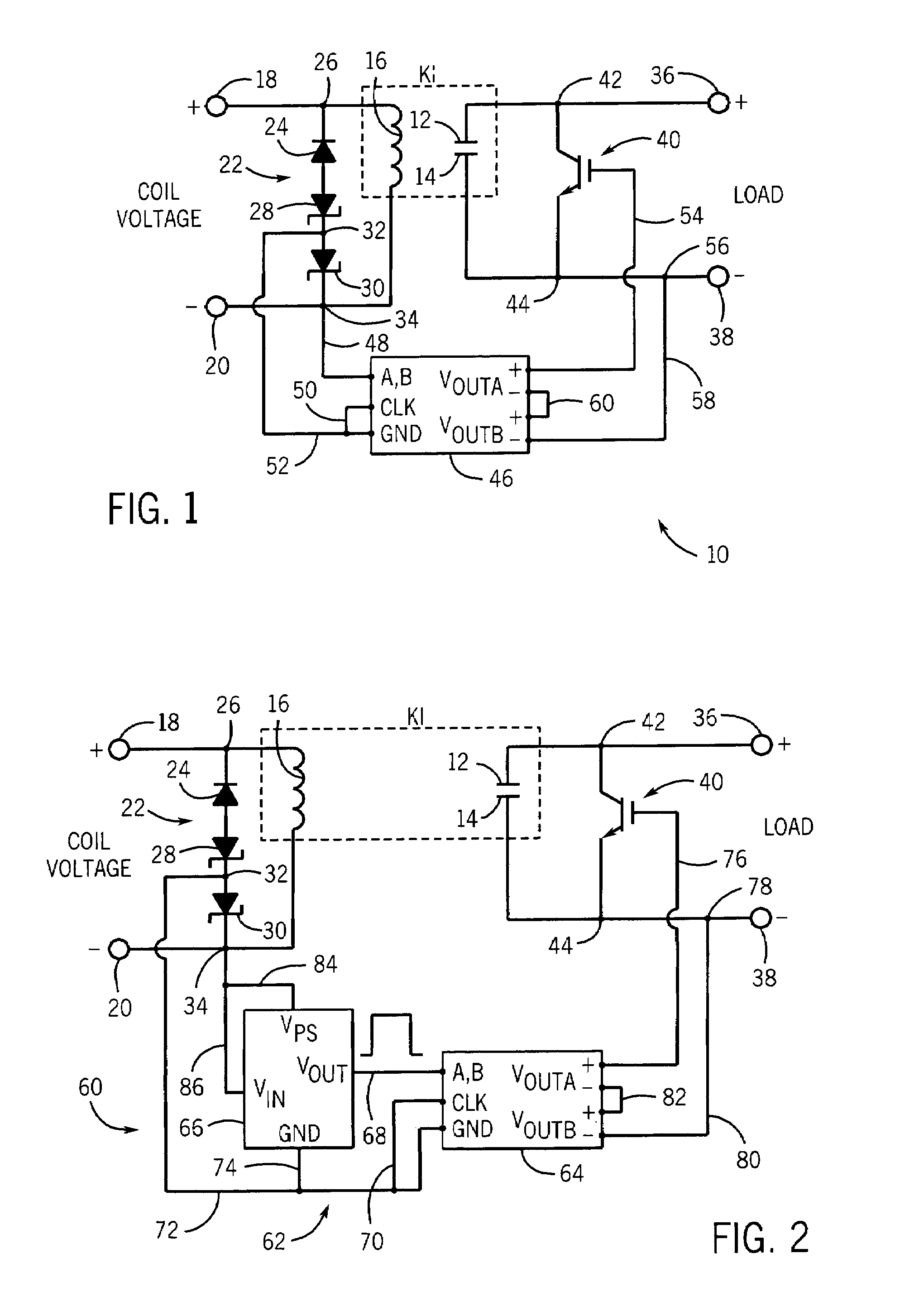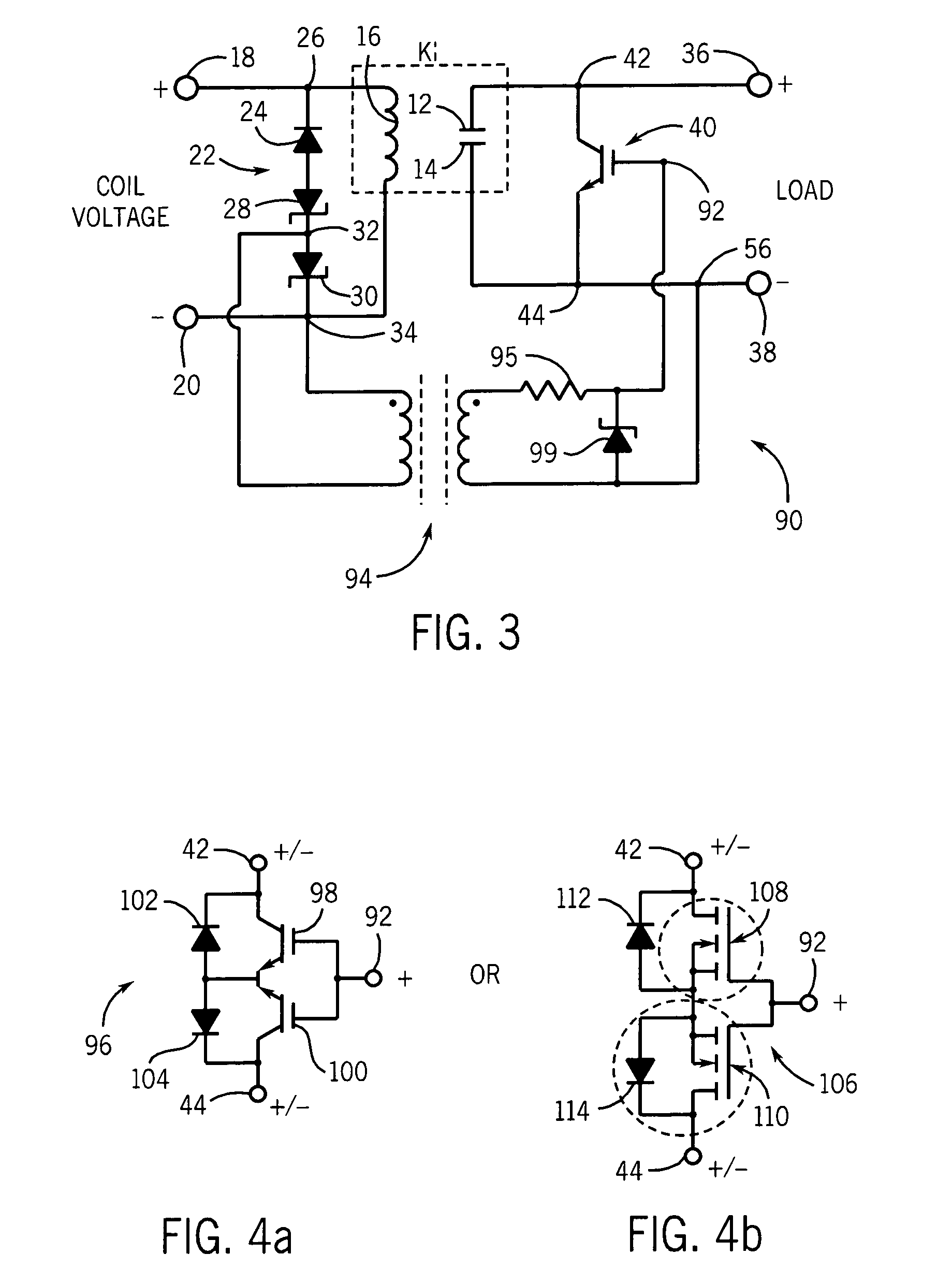Bypass circuit to prevent arcing in a switching device
a switching device and bypass circuit technology, applied in the field of bypass circuits, can solve the problems of increasing affecting the operation of the switch, etc., and achieving the effects of reducing the size and weight of the switching device, and reducing the potential for arcing
- Summary
- Abstract
- Description
- Claims
- Application Information
AI Technical Summary
Benefits of technology
Problems solved by technology
Method used
Image
Examples
Embodiment Construction
[0028]Referring to FIG. 1, a bypass circuit in accordance with the present invention is generally designated by the reference numeral 10. It is intended that bypass circuit 10 minimize the arcing that may occur during the opening of contacts 12 and 14 of switching device K1 having electrical energy passing therethrough. As is conventional, switching device K1 includes coil 16 that controls the opening and closing of contacts 12 and 14. The first end of coil 16 is connected to positive terminal 18 of a coil voltage source and the second end of coil 16 is connected to negative terminal 20 of the coil voltage source.
[0029]A coil suppression circuit, generally designated by the reference numeral 22, is connected in parallel with coil 16. Coil suppression circuit 22 includes diode 24 having its cathode connected to positive terminal 18 of the coil voltage source at node 26 and its anode connected to the anode of zener diode 28. The cathode of zener diode 28 is connected to the anode of z...
PUM
 Login to View More
Login to View More Abstract
Description
Claims
Application Information
 Login to View More
Login to View More - R&D
- Intellectual Property
- Life Sciences
- Materials
- Tech Scout
- Unparalleled Data Quality
- Higher Quality Content
- 60% Fewer Hallucinations
Browse by: Latest US Patents, China's latest patents, Technical Efficacy Thesaurus, Application Domain, Technology Topic, Popular Technical Reports.
© 2025 PatSnap. All rights reserved.Legal|Privacy policy|Modern Slavery Act Transparency Statement|Sitemap|About US| Contact US: help@patsnap.com



